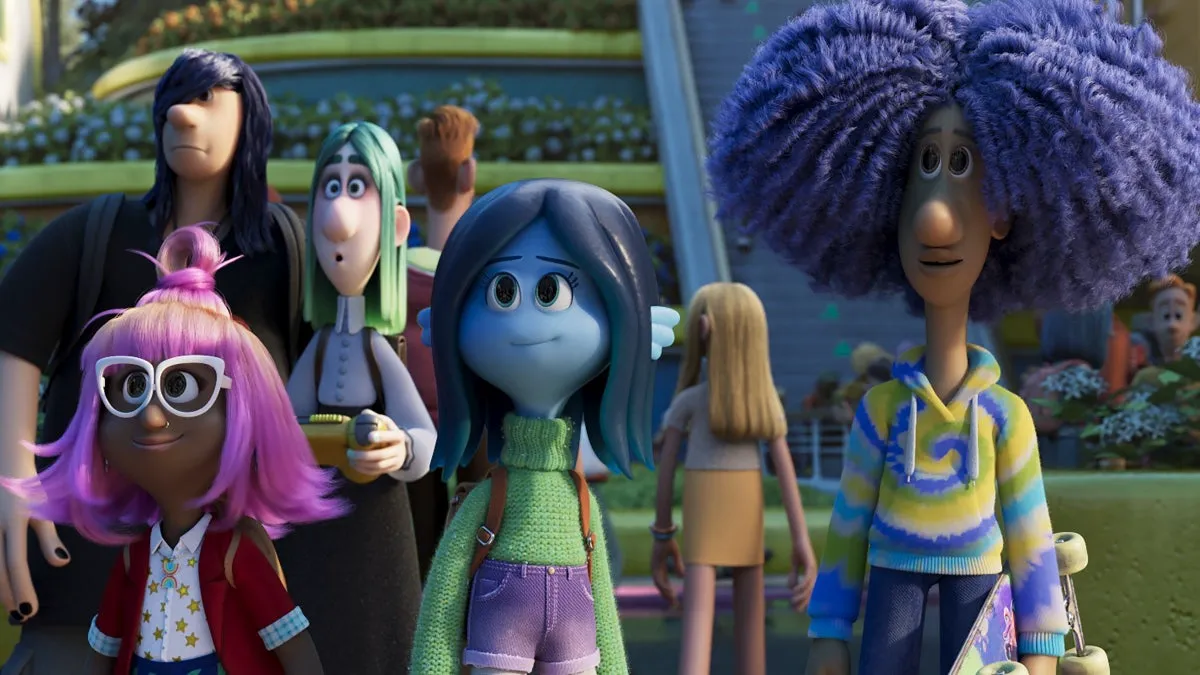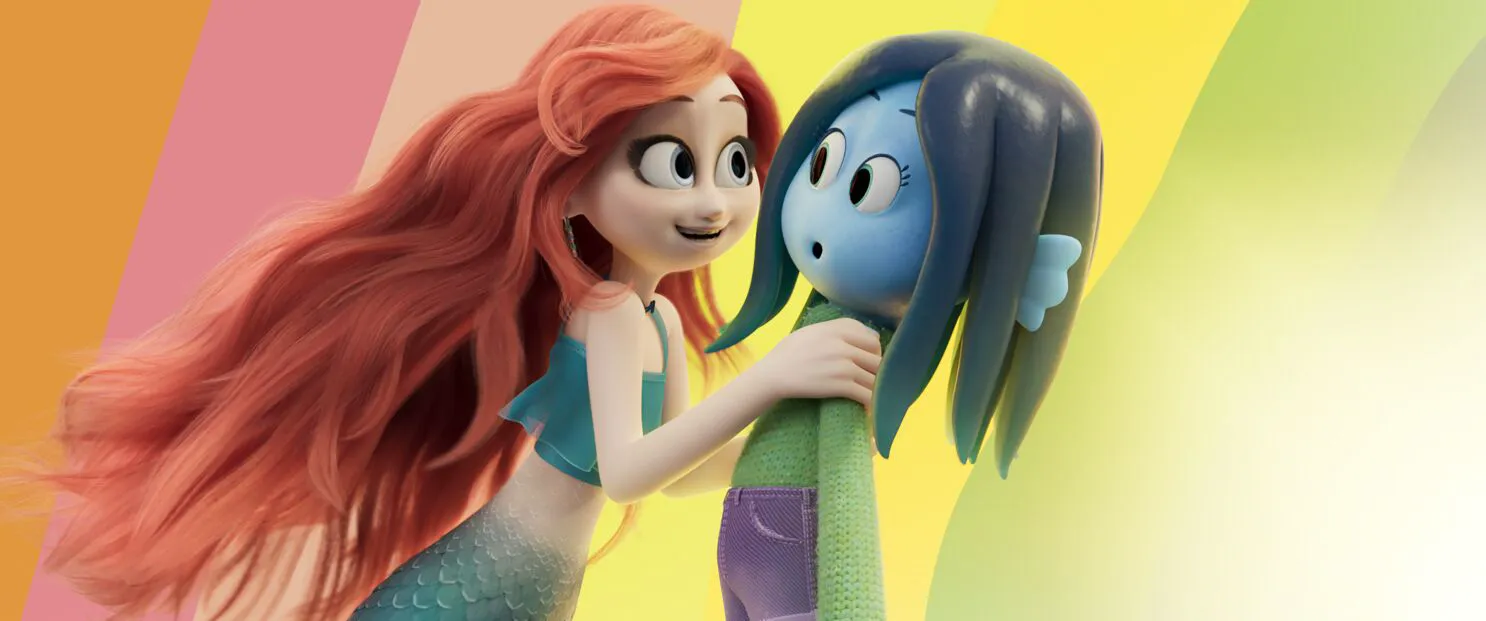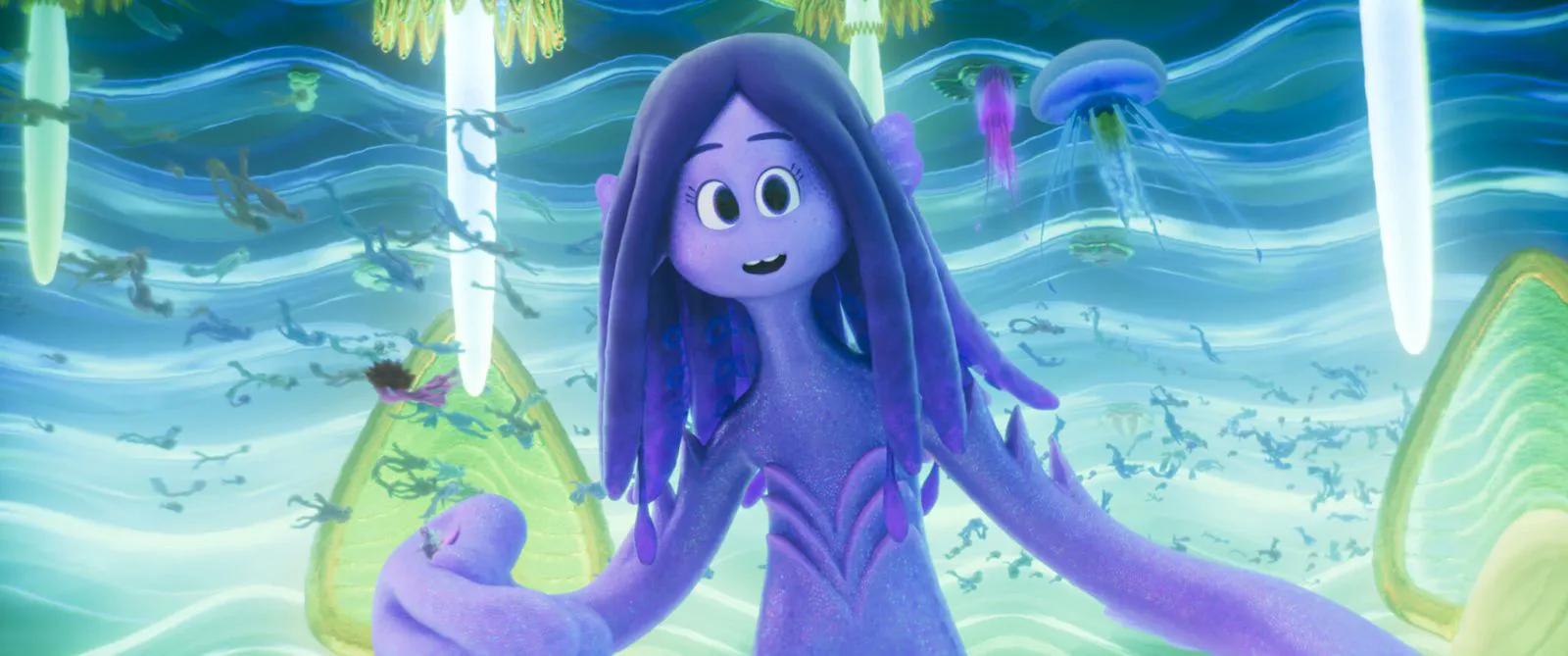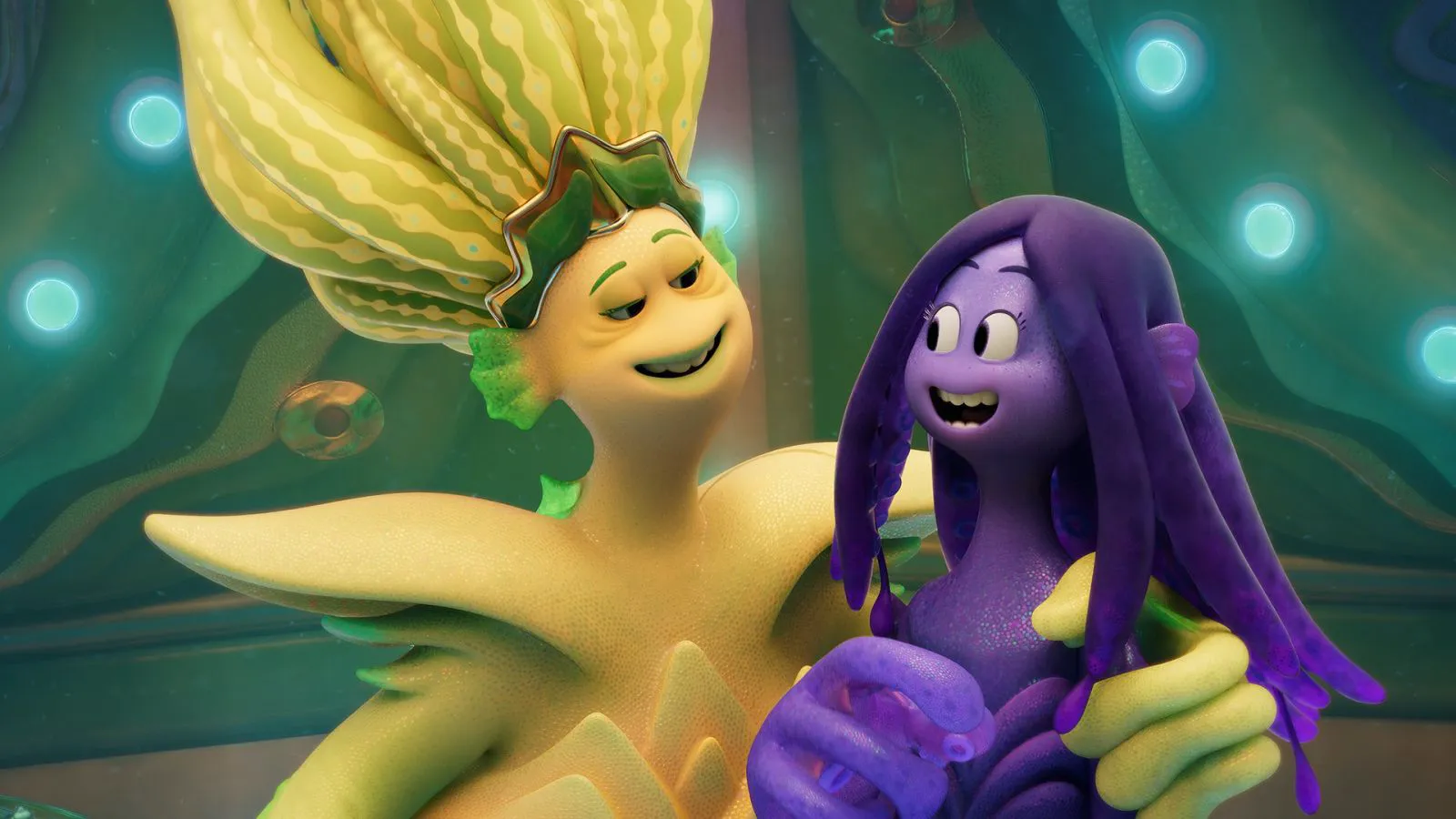DreamWorks’ new project, the kraken girl story “Ruby Gillman, Teenage Kraken,” flopped at the box office, grossing just over $35.3 million. Reviews for the animation are mixed: audiences liked the film more than critics. Let’s try to figure out who to believe and what outweighs – the pros or cons?
What is the movie about?
The feud between krakens and mermaids began long ago when the mermaid queen Nerissa decided to subdue the underwater inhabitants and found an ancient relic – the trident of the ocean titan, a weapon capable of defeating the kraken. The greatest warrior, Agatha Gillman, stopped the mermaid and hid the artifact, then left the sea and began living in the coastal town of Oceanside. Since then, krakens have been hiding among humans.
Years later, Ruby – Agatha’s daughter and an excellent student – dreams of going to prom with her friends and inviting her crush, Connor. But as soon as she decides to talk to the boy, everything goes wrong. Connor falls into the water, Ruby dives after him, and when she resurfaces, she turns into a kraken. Meanwhile, a new girl, Chelsea – a beautiful redhead – appears at school.

Still from the animated film “Ruby Gillman, Teenage Kraken”
The Teenage Girl’s Sea Diary
Most stories about the underwater world center on the odyssey of marine life (“Finding Nemo,” “The Underwater Era”). “Ruby Gillman” veers off the beaten path, offering a teenage drama about the confrontation between krakens and mermaids.
Ruby finds it difficult to live not only in the body of a teenage girl but also a sea creature, and the bright new girl Chelsea only fuels her insecurity. The girls’ friendship, on the one hand, begins with Ruby’s envy, and on the other, serves Chelsea’s selfish purpose. Although the ambiguity of the new girl was already evident in the promotional materials, and there is no need to talk about intrigue, the film manages to hold the audience’s attention thanks to the characters, and not just the primary ones.
“Ruby Gillman” is a film about accepting otherness (both your own and others’) and about finding connections between generations. Problems with self-perception arose not only for Ruby but also for Agatha: she also had to argue with her mother.

Still from the animated film “Ruby Gillman, Teenage Kraken”
What do corporate wars have to do with it?
The images of the central characters grow out of the main theme of the studio’s films – the destruction of fairy-tale canons: in “Shrek,” an ogre went to save a princess, and the handsome prince drowned in self-admiration. Here, too, the antagonist and protagonist switch roles: mermaids are evil, and krakens are good.
The ideological conflict can also be compared to the confrontation between two studios, DreamWorks and Disney. The former makes stories about awkward monsters, the latter about beautiful princesses. Chelsea is not Ariel at all, despite her external resemblance. She is cunning, devious, and will do anything to achieve her goals. “Ruby Gillman” will be remembered as a film with an evil mermaid, and the rivalry is fueled by the release of the project in the same year as the live-action remake of the classic Disney animation.

Still from the animated film “Ruby Gillman, Teenage Kraken”
“Ruby Gillman” animation has its own style
The film’s animation stands out from DreamWorks’ previous works – “Puss in Boots: The Last Wish” and “The Bad Guys.” “Ruby Gillman” does not try to imitate “Spider-Man: Into the Spider-Verse”: a different style has been chosen. Acidic colors prevail in Oceanside: orange, yellow, bright blue, crimson. And the underwater kingdom of the krakens seems to be illuminated by neon lamps.
The creators try to emphasize the images of the characters as well. For example, krakens are more flexible than ordinary people. Or they display emotions: in one scene, Ruby is worried, and the world around her is distorted by waves.

Still from the animated film “Ruby Gillman, Teenage Kraken”
But the underwater world is quite monotonous, and the confrontation lacks scale
Most of the film’s underwater scenes take place in the dark, with only the krakens themselves glowing. It is obvious that there are few inhabitants at depth – the creators of “Ruby” use this, trying to hide the lack of budget. Mostly you can see whales and jellyfish on the screen, and there is little interaction with them. In comparison with the recent “Luca,” the elaboration of the world is greatly inferior: after watching “Ruby,” you don’t want to buy tickets to Oceanside – it’s a standard town on the coast, unlike Portorosso.
On the film’s poster, you can see many krakens and mermaids – this is a marketing ploy that deceives expectations. The war between the two species is only told. What is shown is a local duel – a showdown between one mermaid and three krakens. And that’s at the very end. The fight does not cause delight: the underdeveloped graphics prevent you from finding yourself in the center of the battle. “Ruby Gillman” lacks battles, like in “The Sea Beast”: the battles on Netflix were not inferior to “Pirates of the Caribbean.”

Still from the animated film “Ruby Gillman, Teenage Kraken”
Humor drowns in optional plot lines
By the way, about pirates. You want to empathize more with Captain Gordon Lighthouse, Ruby’s dad, younger brother, and uncle – Arthur, Sam, and Brill: the images of the secondary characters turned out to be brighter than those of the protagonists. The humor of the film is built on the carefree nature of men: hunting sea monsters, corking ships in bottles, and playing dodgeball with friends.
The characters even get into a separate adventure, but the bonus level has a bad effect on the plot. It seems that the creators never figured out what story they wanted to share. Everything is mixed up: the adventures of unsuccessful sailors, the conflict of generations, the confrontation between krakens and mermaids, and the hardships of growing up. And nothing can be fit into a small time frame – 91 minutes.

Still from the animated film “Ruby Gillman, Teenage Kraken”
The film looks secondary
“Ruby Gillman” is the company’s first cartoon with a girl protagonist. This is what director Kirk DeMicco says in an interview. But that’s not entirely true, “Monsters vs. Aliens” was earlier. The films are similar – the main characters can increase in size, and the plot centers on the confrontation between two species. In general, while watching “Teenage Kraken,” you constantly want to compare it with other films, which hardly benefits the film. Thus, the core is taken from “Turning Red,” and the image of Captain Gordon Lighthouse makes you remember “Luca.”
As a result, “Ruby Gillman” looks like a standard studio cartoon with established and properly working algorithms. The animation has its advantages: originality, good humor, and its own style. But the disadvantages largely outweigh: the secondary nature of the plot and the monotony of the underwater world. We doubt that Ruby herself would like such a movie: excellent students don’t cheat.